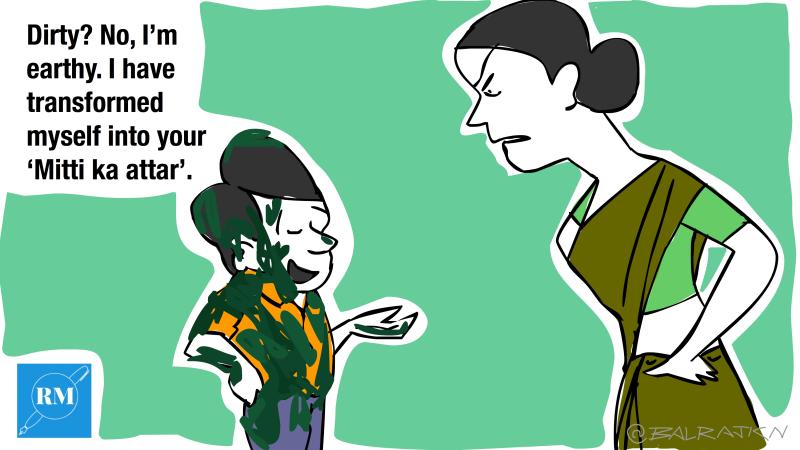
Have you noticed the smell of the air just after a rain - the fresh earthy smell that take us back to our childhood, that inspired a lots of poets and writers to flourish with their creativity?
It was around the 1960’s when two Australian mineralogists, Isabel Joy Bear and Richard Grenfell Thomas isolated the compound responsible for the odor and named Petrichor, after the fluid that flows in the veins of the gods in Greek mythology. Surprisingly, long before their isolation, Indian perfume makers from Kannauj, a small village in Uttar Pradesh, India, were able to capture the earthy aroma into a perfume bottle. They called it “Mitti ka attar”. They keep baked clay disc in the sun in the hot and dry spell of April and May and then extract the earthy smell perfume by the process of distillation.
Isabel and Grenfell mentioned the contribution of the people of Kannauj in their paper published in the Nature journal in 1964. They defined Petrichor as a mixture of different chemicals that could vary in different places in different seasons. But how does soil all over the world smell similar after a shower, if different places have different soil types?
The reason behind this is a particular class of bacteria called Actinomycetes, the same bacteria that produce streptomycin, an antibiotic against tuberculosis. These bacteria are present in the soil all over the world. In dry and hot climate, they become inactive to form spores that secrete a compound called geosmine with an earthy smell. Interestingly, geosmine is responsible for the distinctively earthy taste in beets or the muddy taste in catfish. Human nose is extremely sensitive to the smell of geosmine. We can smell it in a concentration as low as 5 parts per trillion - that means we can smell one drop of geosmine in four Olympic sized swimming pools full of water.
A recent study conducted by scientists at MIT provides an answer to how this smell reaches the air. When a raindrop hits a porous surface of soil, it traps a tiny amount of air. These air bubbles then speed upward and break, releasing microscopic particles, called aerosols, into the air. These aerosols carry the aroma of the fresh earth to air.
Isabel and Richards became famous after this discovery and their works are still remembered. It is unfortunate that we do not know the pioneer perfume makers of Kannauj who were able to capture this aroma long before the duo. The perfume industry in Kannauj is worsening day by day and a 50 ml of “Miiti ka attar” can cost a whooping $16.





